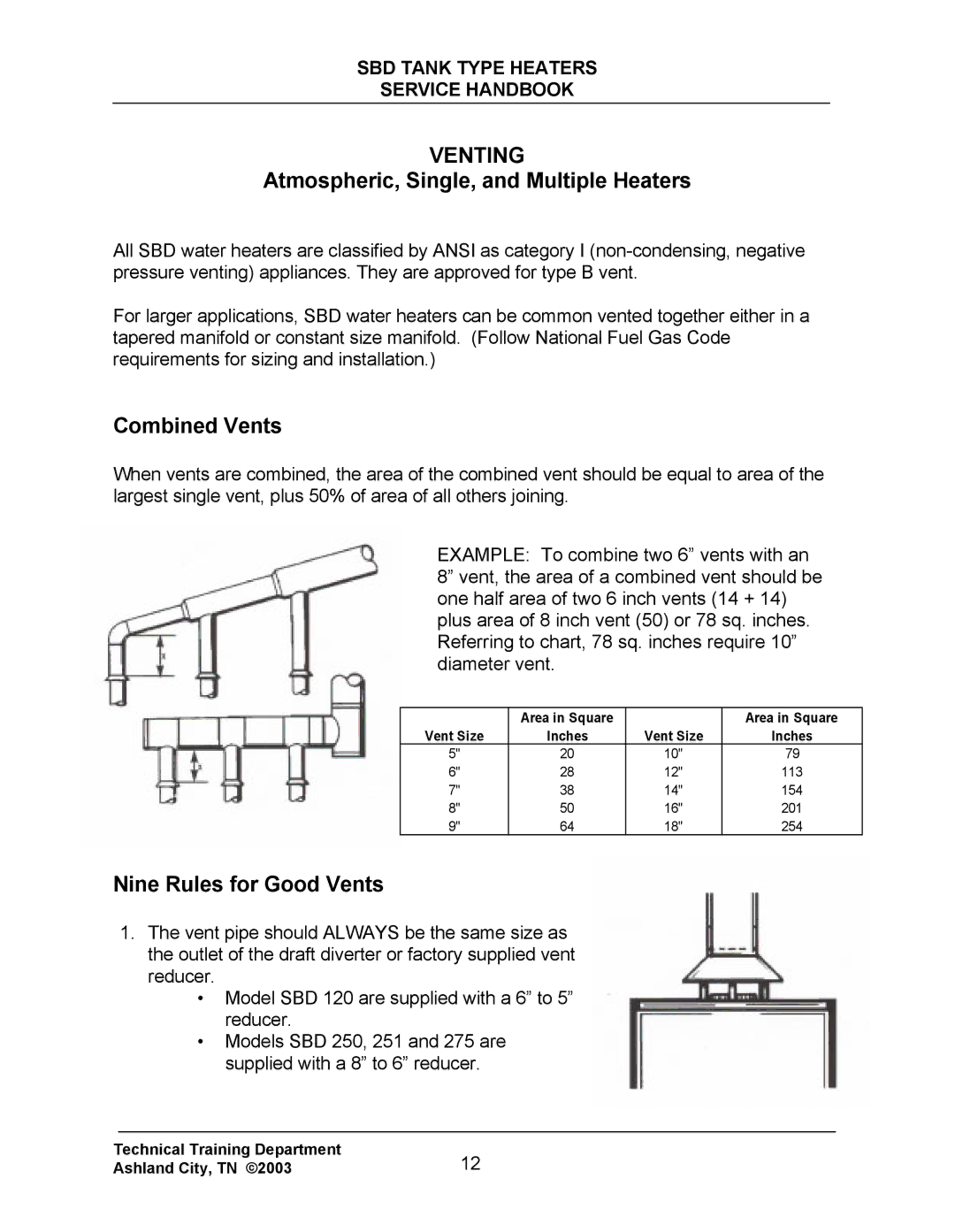SBD85 500, SBD71 120 specifications
State Industries has long been recognized as a leader in the manufacturing of water heaters and other thermal products, and its SBD85 500 and SBD71 120 units are prime examples of their innovative approach to energy efficiency and performance. These models are designed to meet diverse residential and commercial needs, showcasing the company's commitment to quality, reliability, and advanced technology.The SBD85 500 model is an electric water heater designed to deliver an impressive capacity of 85 gallons. It features a glass-lined tank that provides durability and long-lasting performance. The insulation is a key characteristic, as it minimizes heat loss, thereby enhancing energy efficiency. One of the standout technologies integrated into this unit is the high-efficiency heating elements, which ensure rapid heating of the water while consuming minimal energy.
Furthermore, the SBD85 includes adjustable thermostats that allow users to customize their water temperatures according to specific needs. This feature not only improves user comfort but also contributes to lower energy bills by allowing for more efficient energy use. The model is engineered to operate quietly, making it an ideal choice for residential applications where noise levels can be a concern.
On the other hand, the SBD71 120 offers a more compact solution with a capacity of 71 gallons, making it suitable for smaller spaces while still providing robust performance. This model is equally energy-efficient, benefiting from similar technologies such as high-quality insulation and advanced heating elements. The SBD71 is particularly noted for its compact design, which allows for installation in tight areas without compromising on performance.
Both models are built with user-friendly features, including easy connections for water and electrical supply, and clear indicators for maintenance needs. Safety is also a priority in the design of these units, with built-in temperature relief valves to prevent overheating and pressure buildup.
In conclusion, the State Industries SBD85 500 and SBD71 120 water heaters embody the company's dedication to quality and technological advancement. Whether for a large household or a smaller living space, these models provide efficient, reliable hot water solutions tailored to meet the demands of modern consumers. With their advanced features and exceptional performance, they represent a smart investment in energy efficiency and long-term value.

